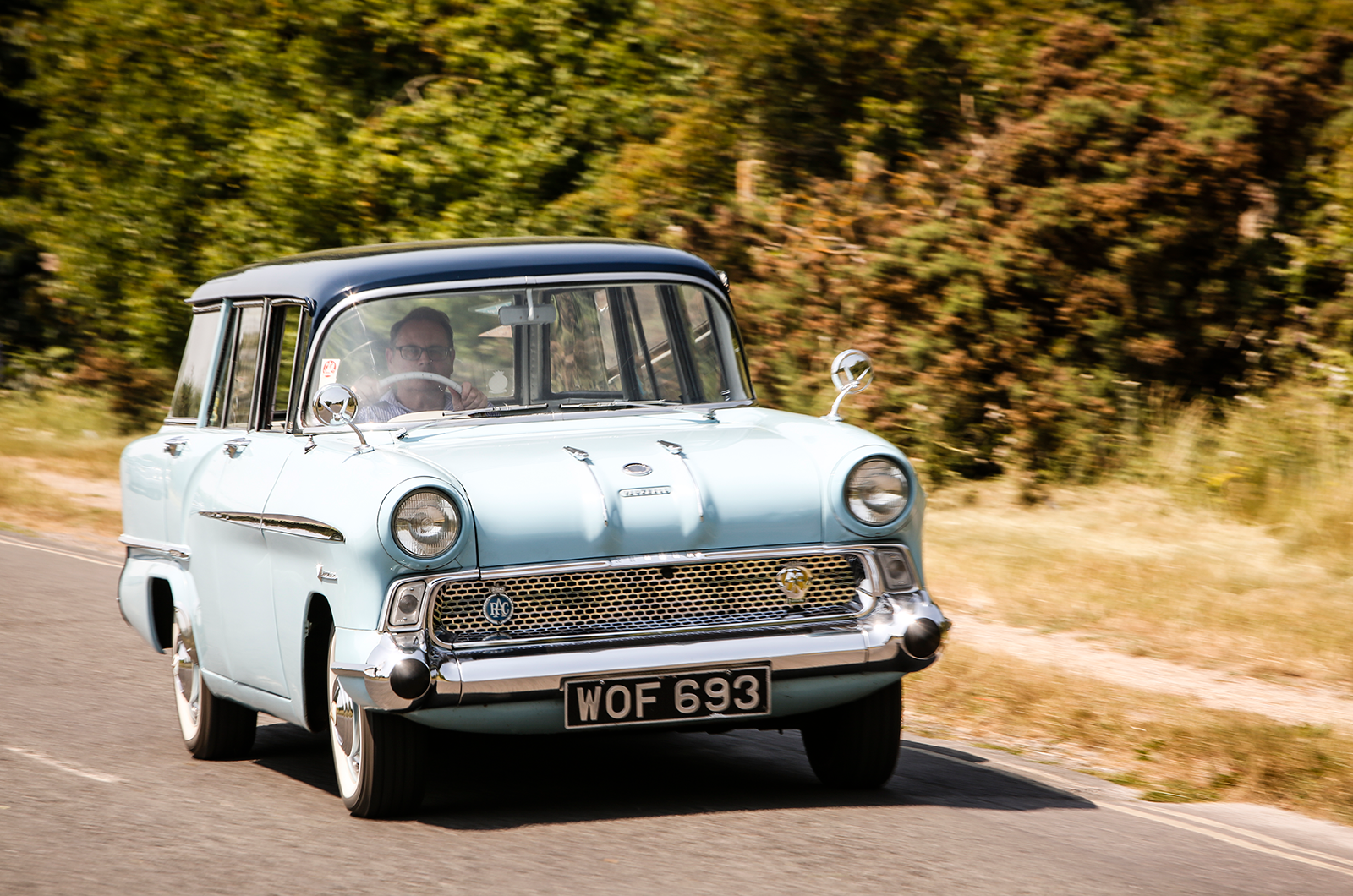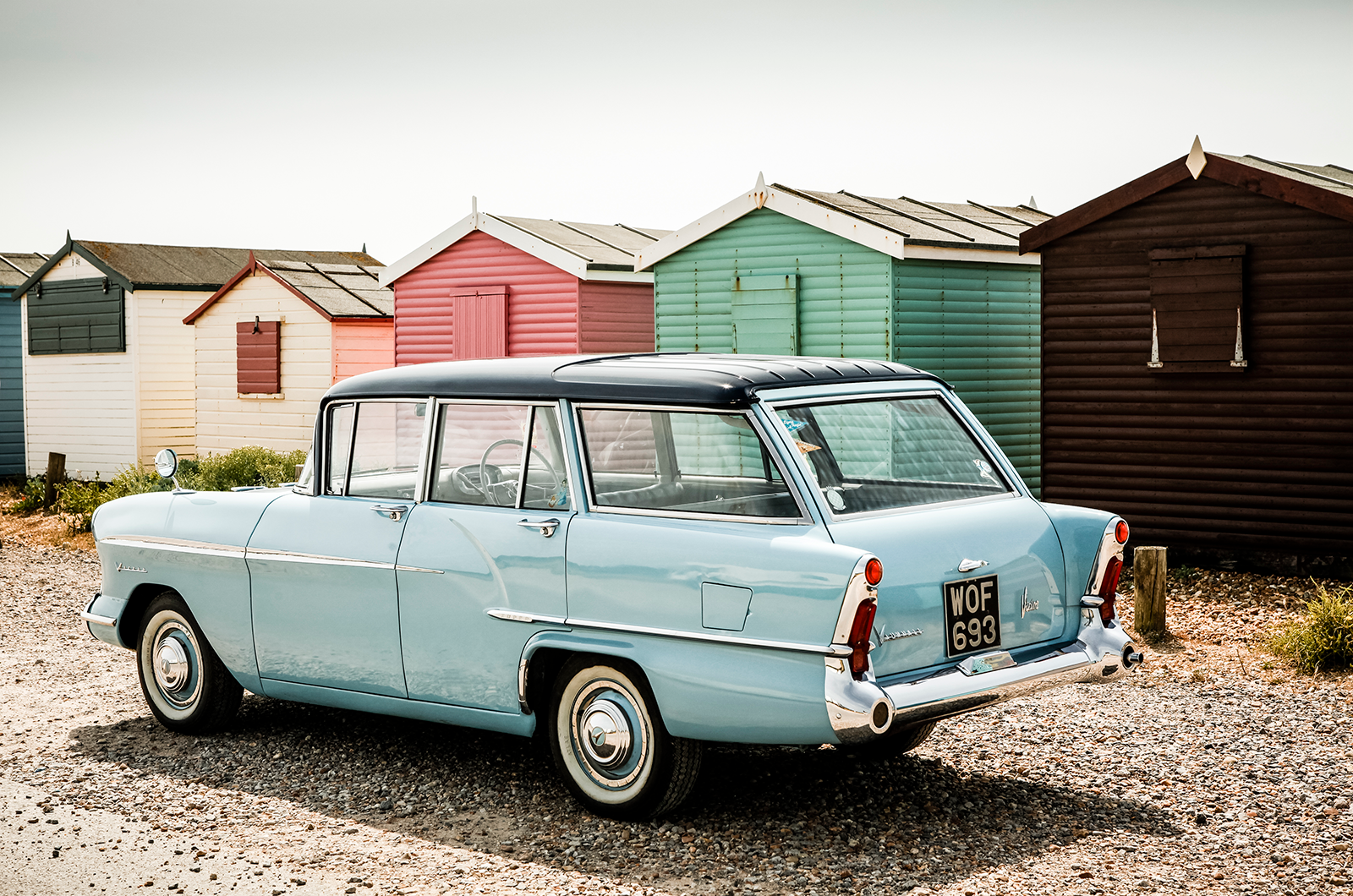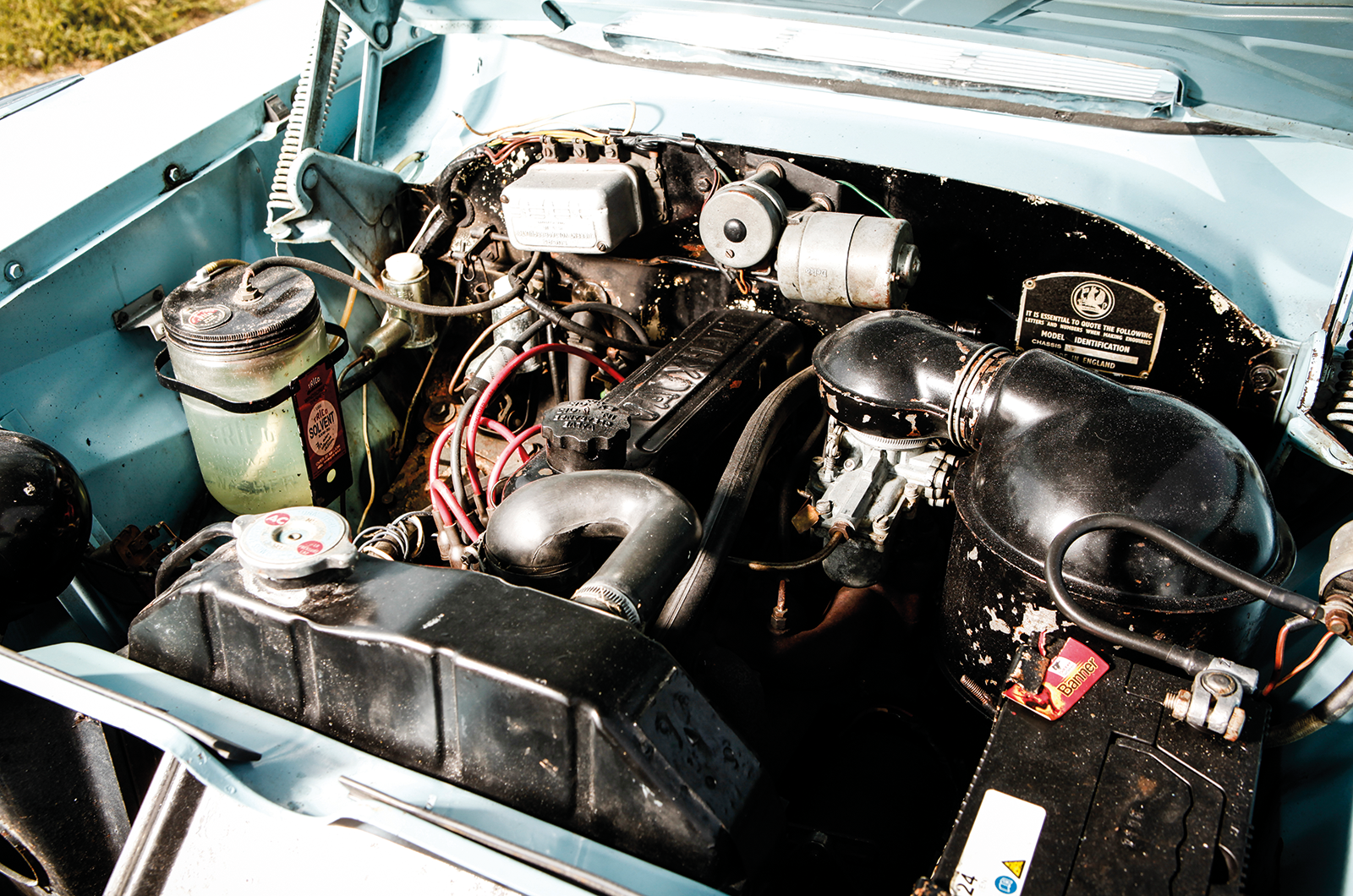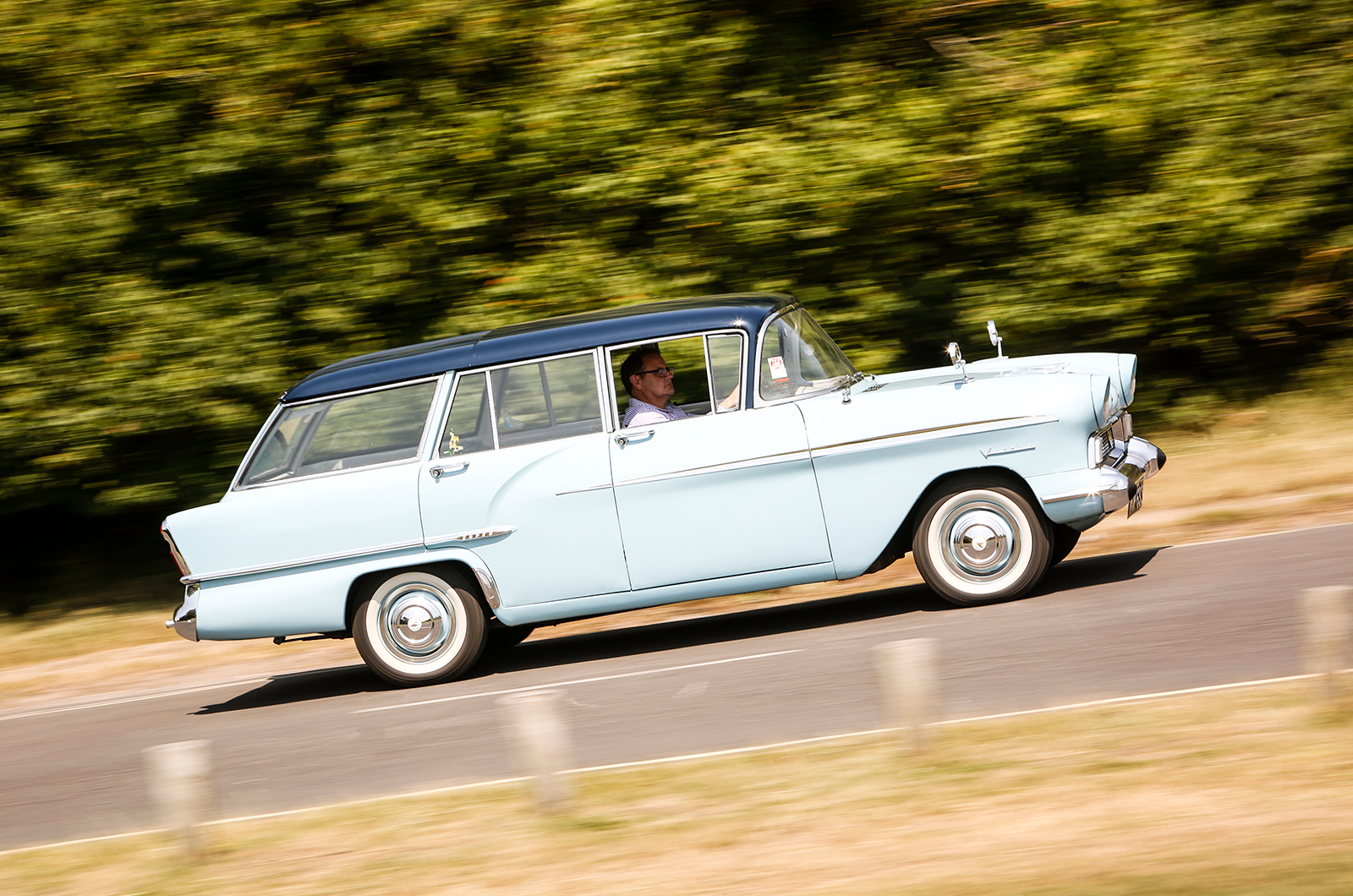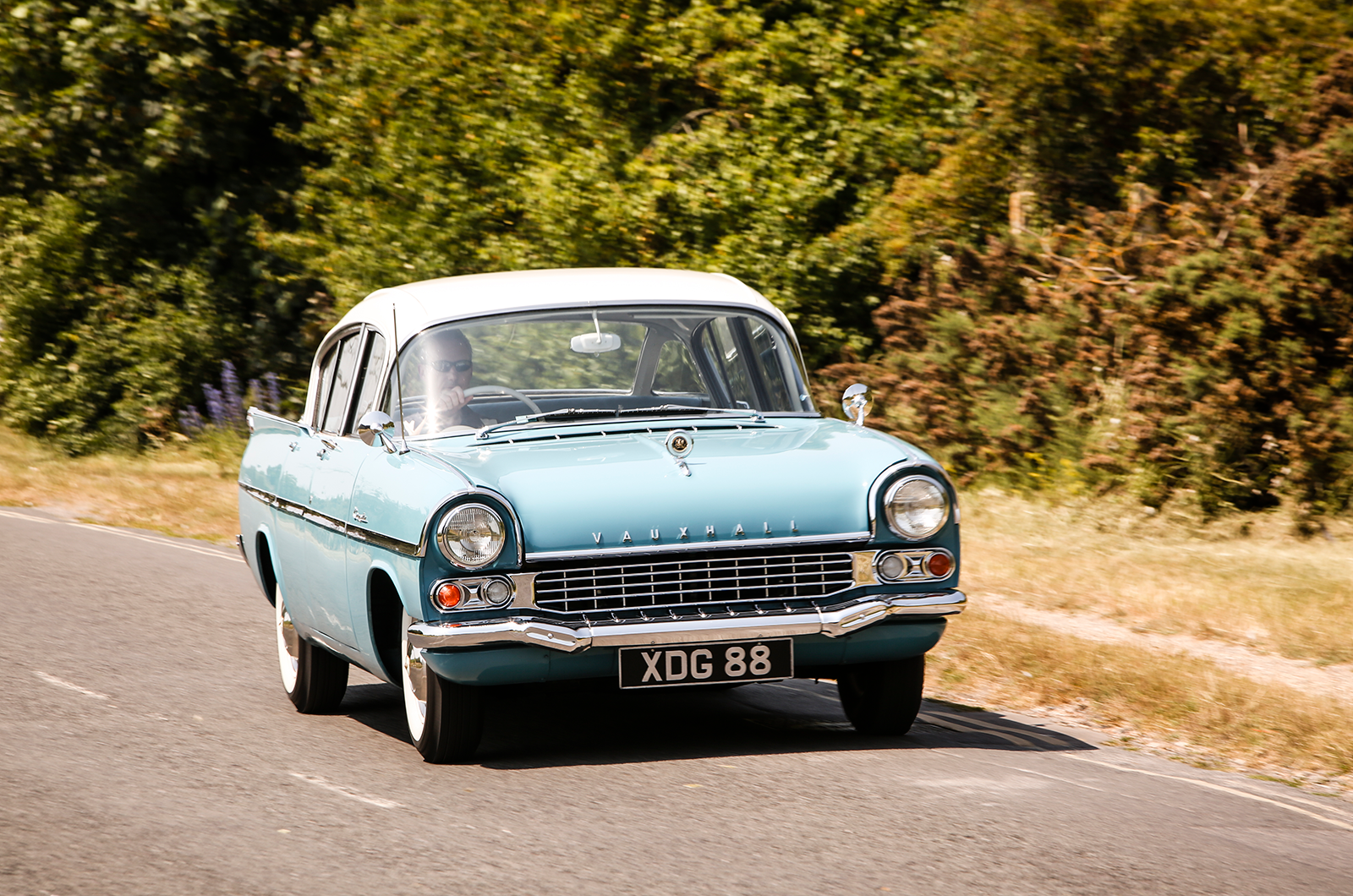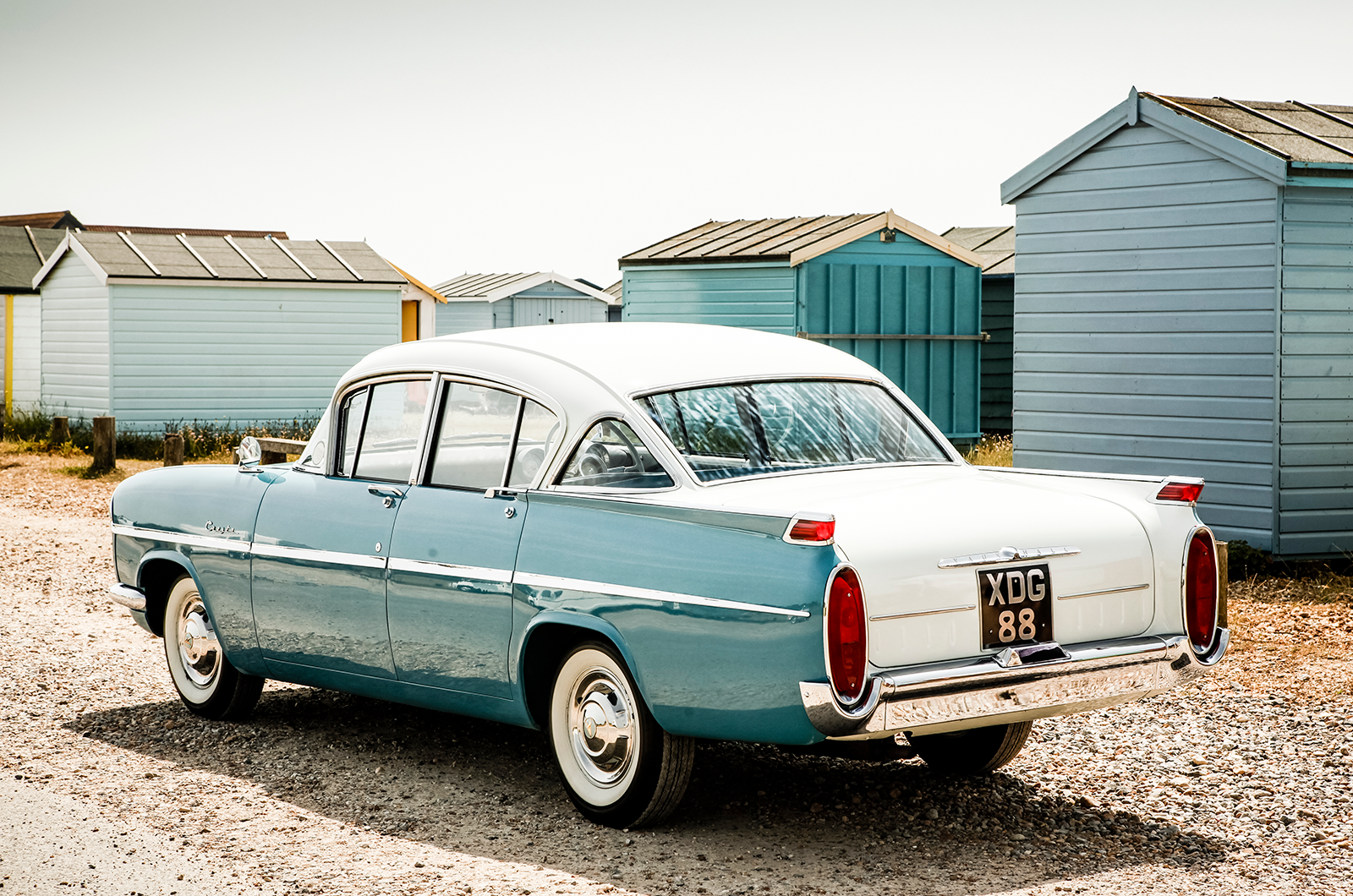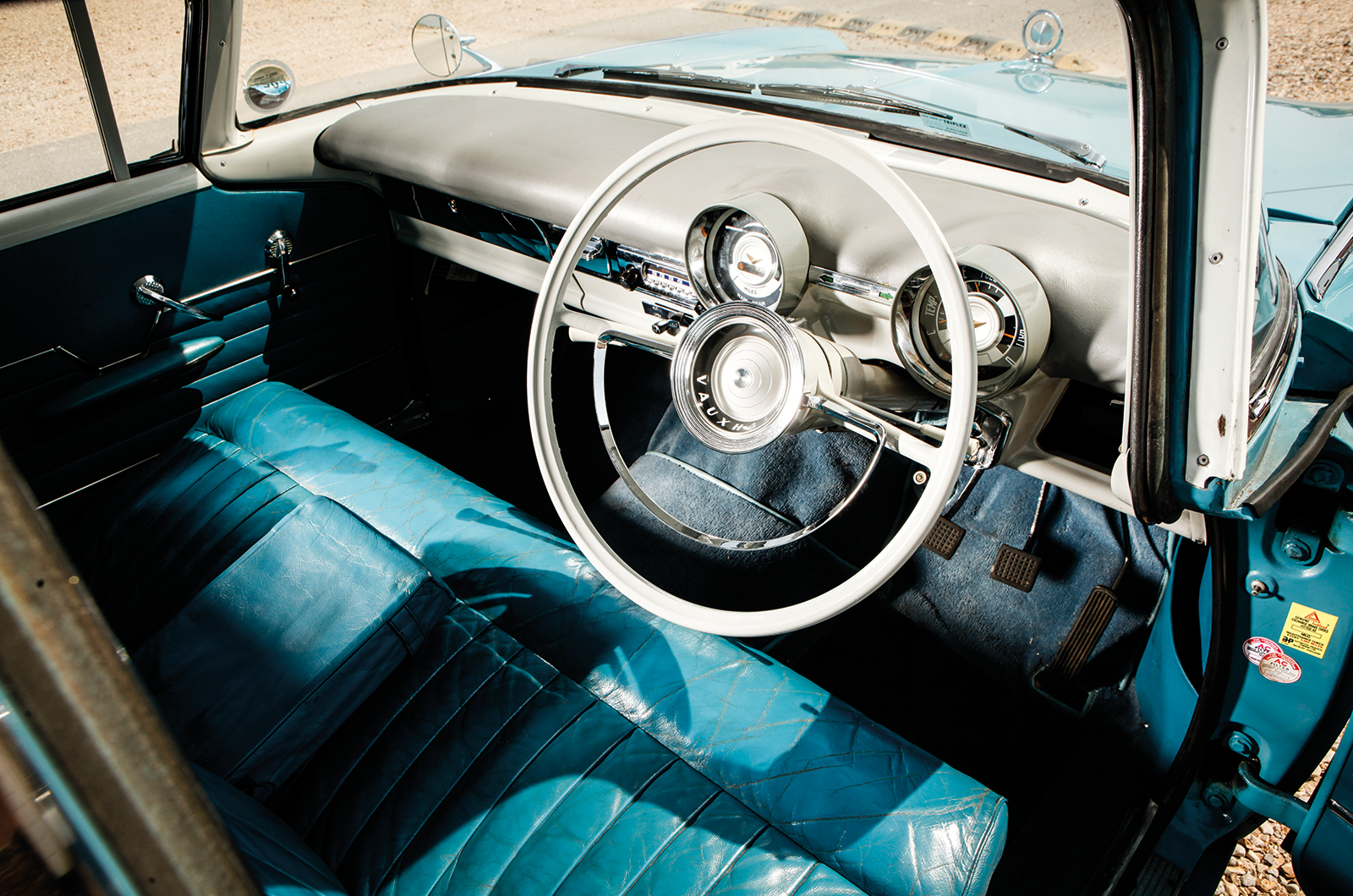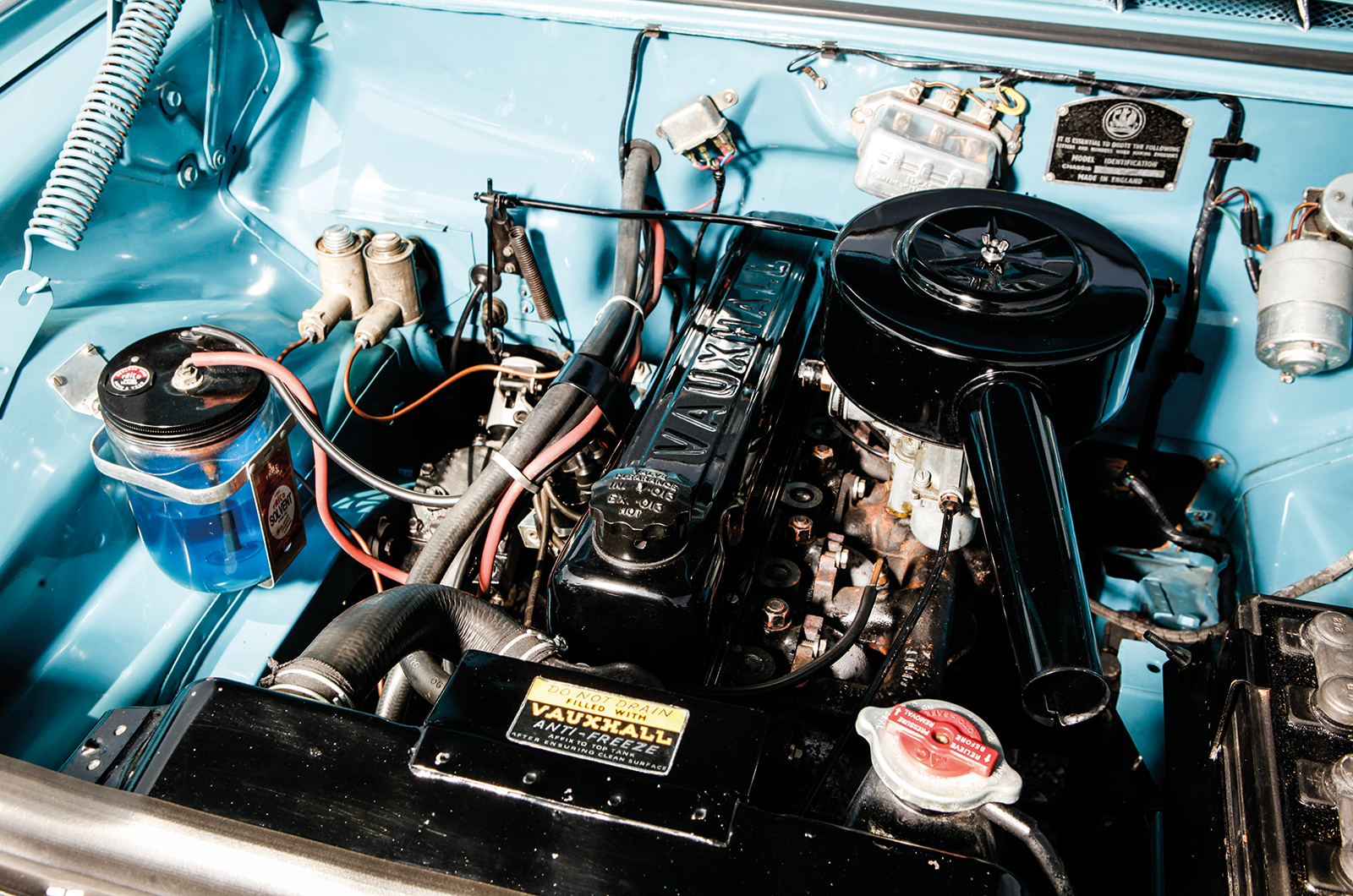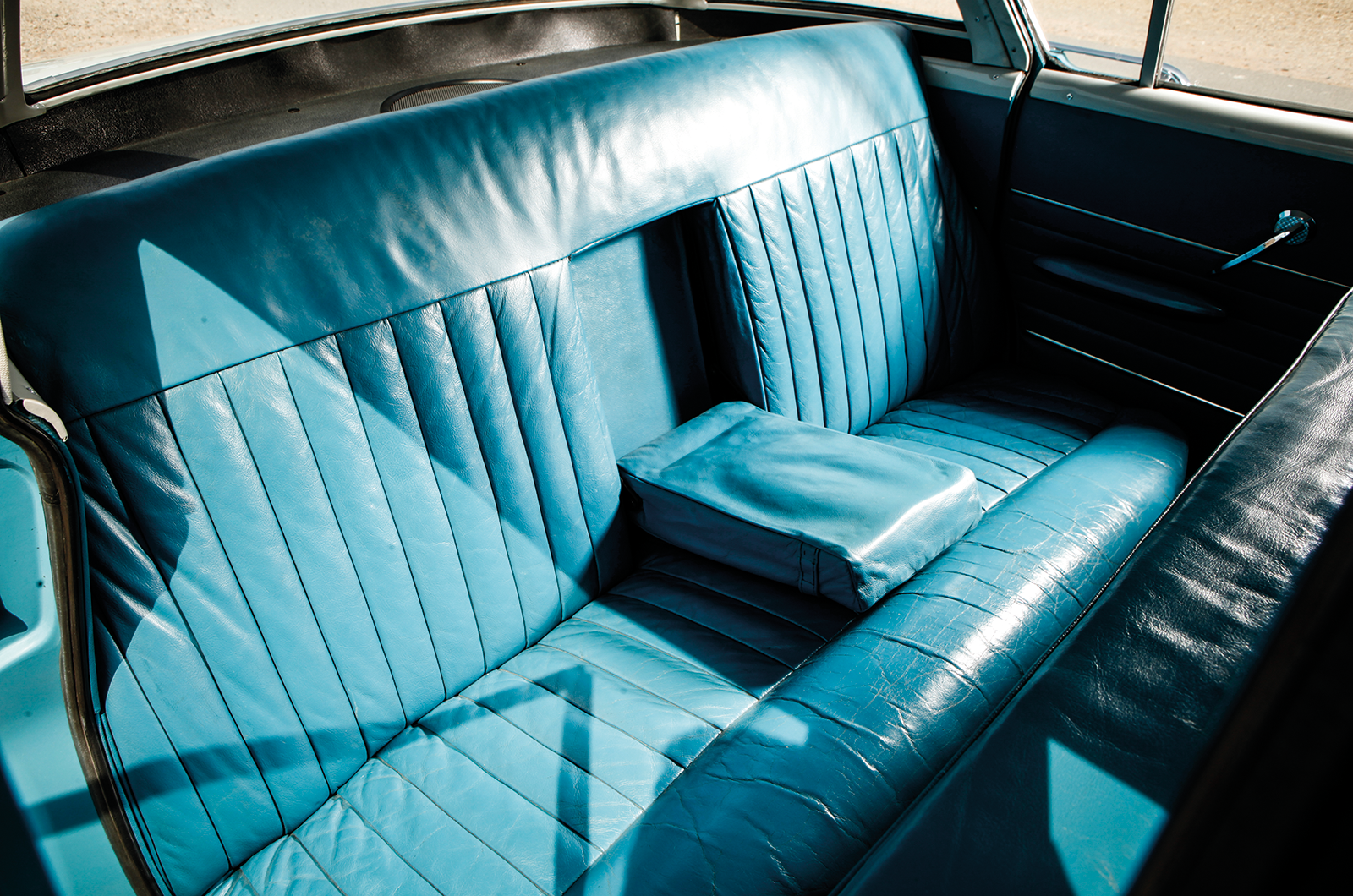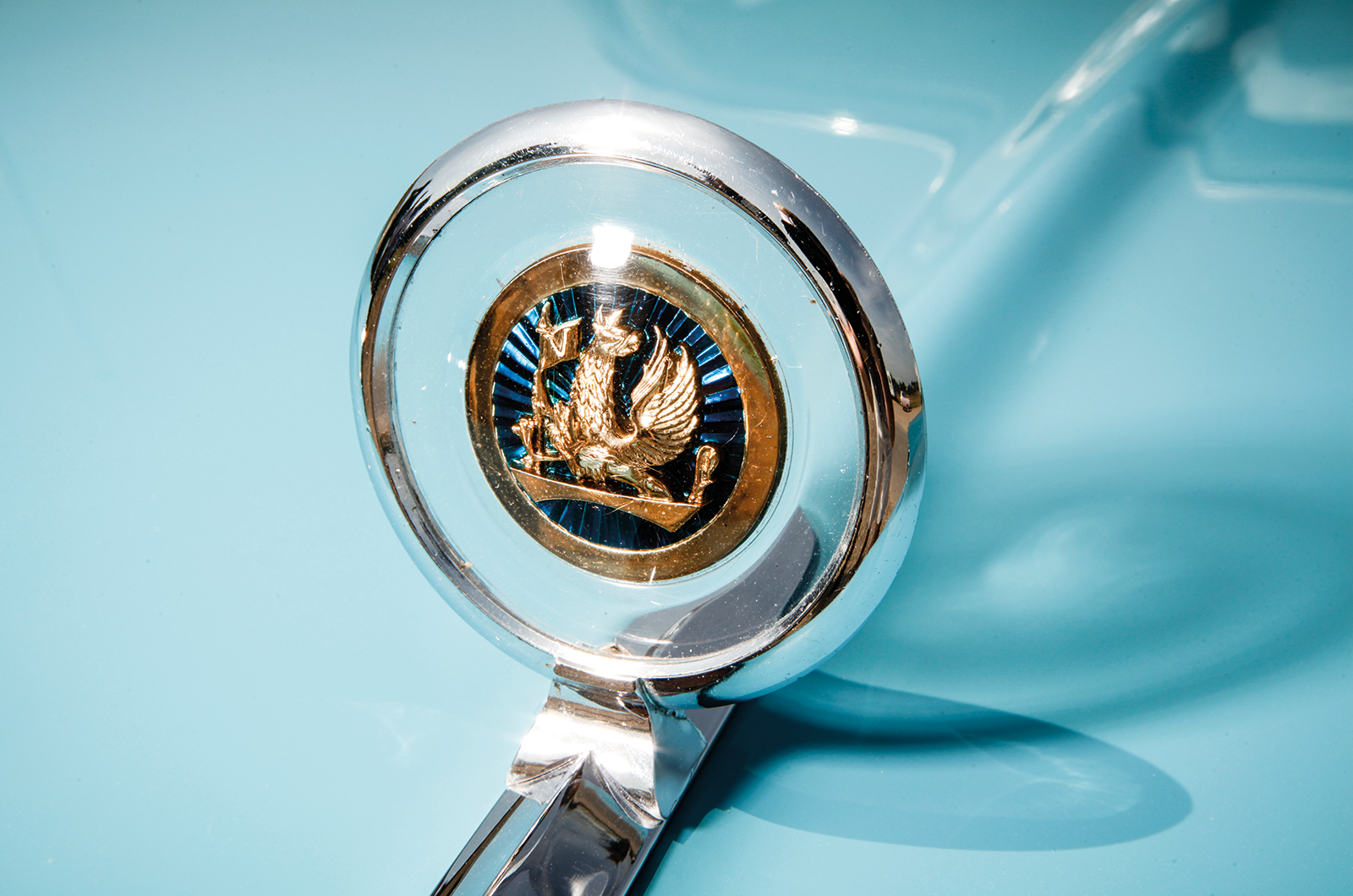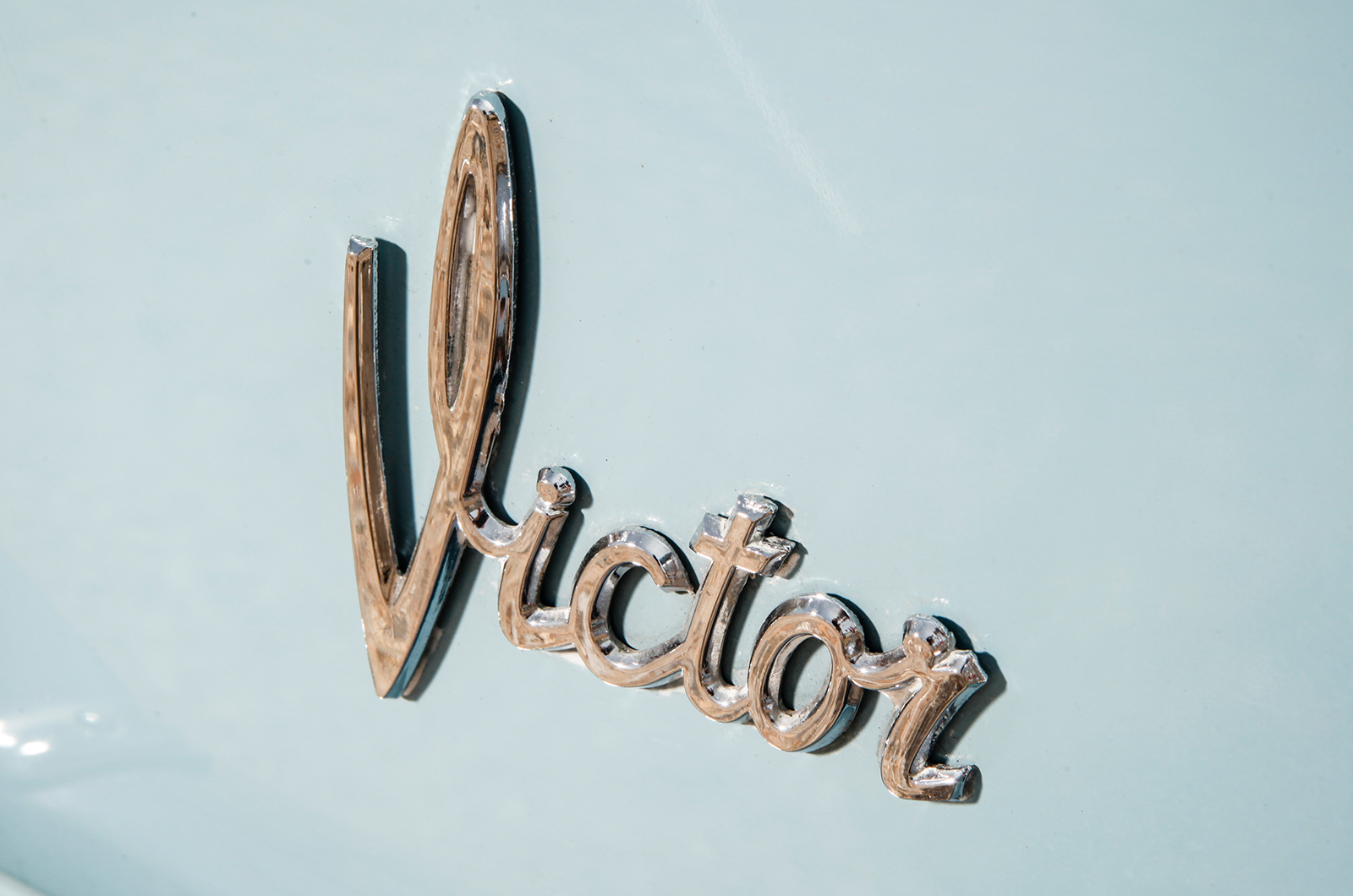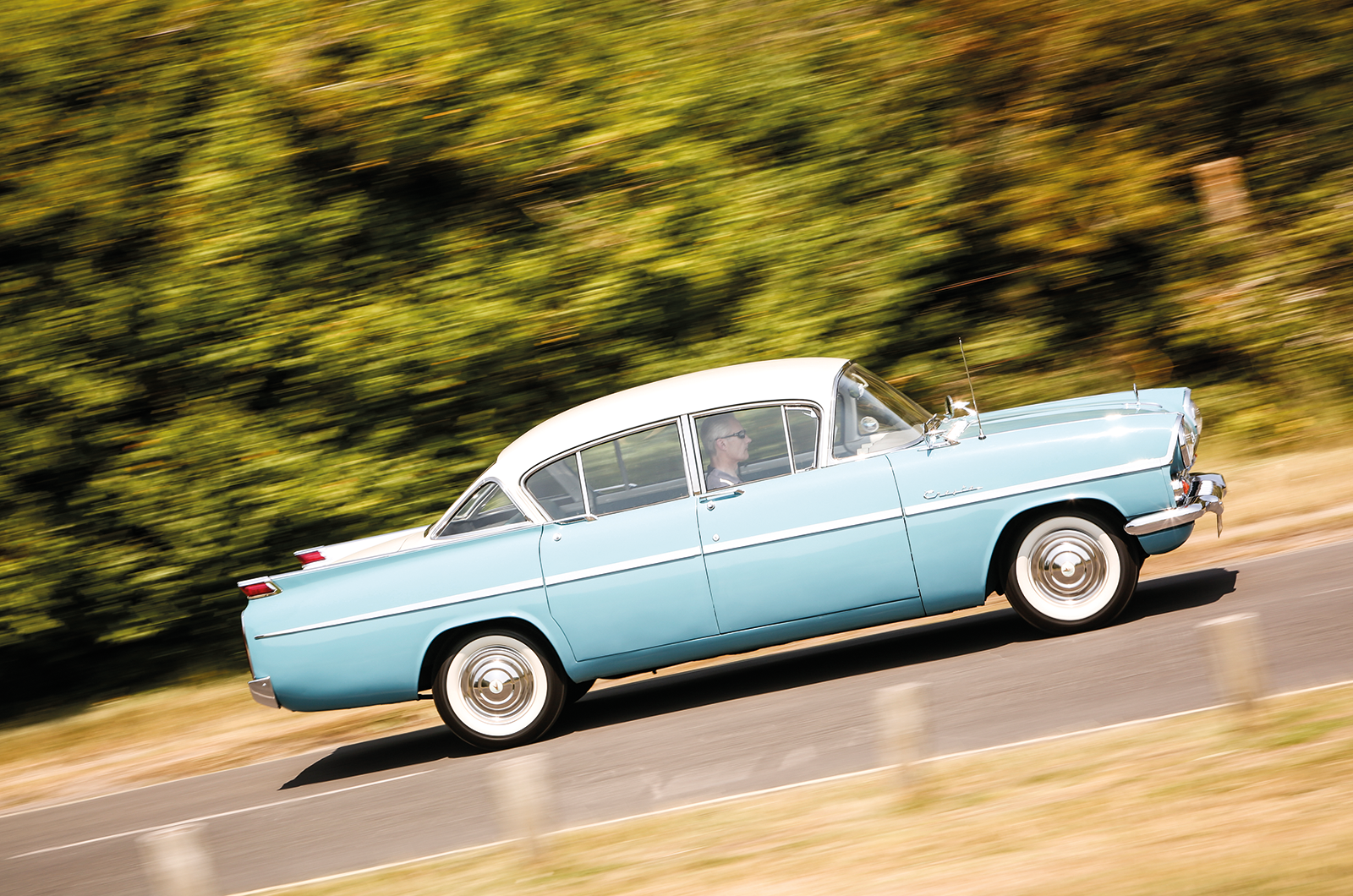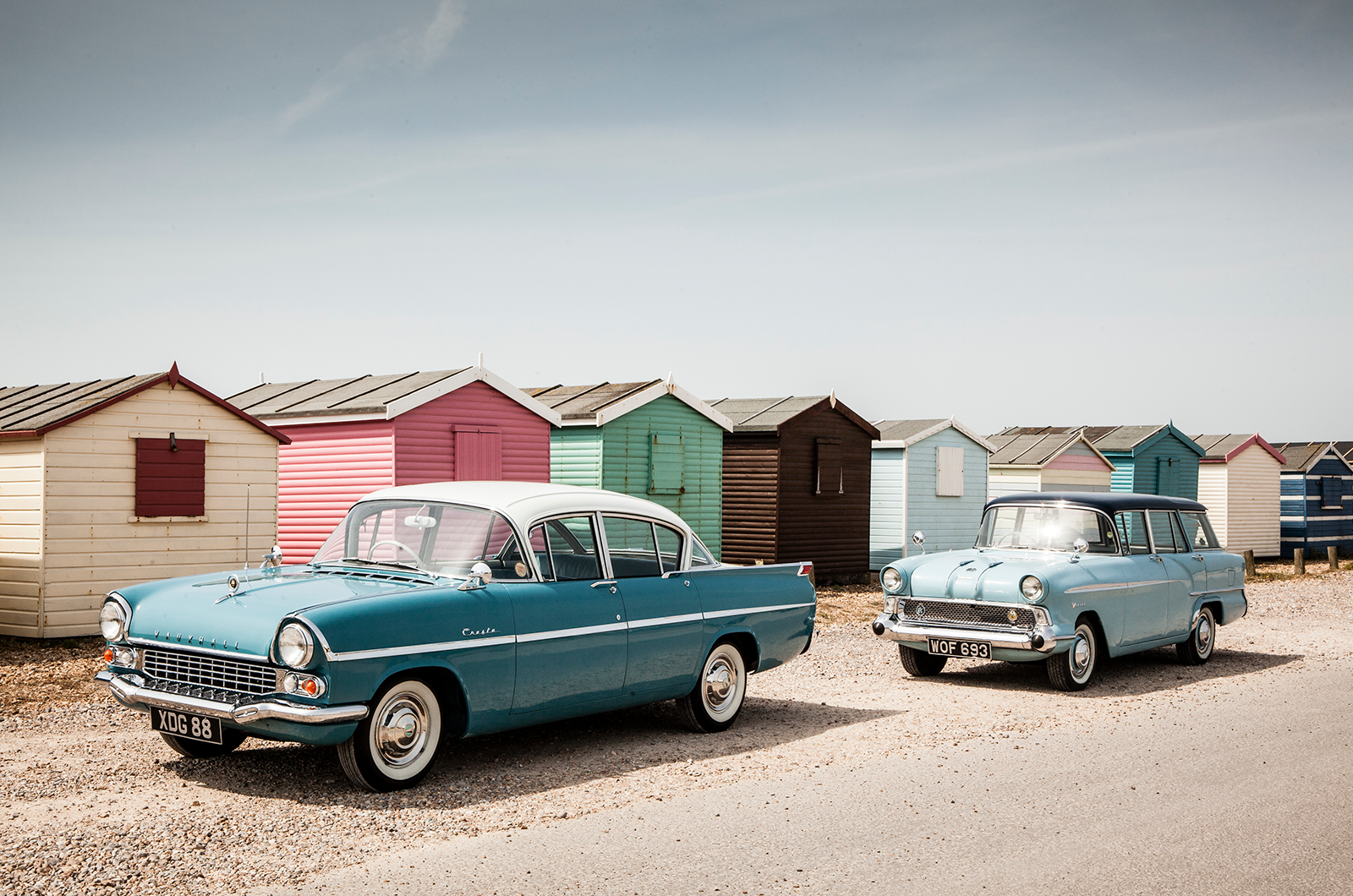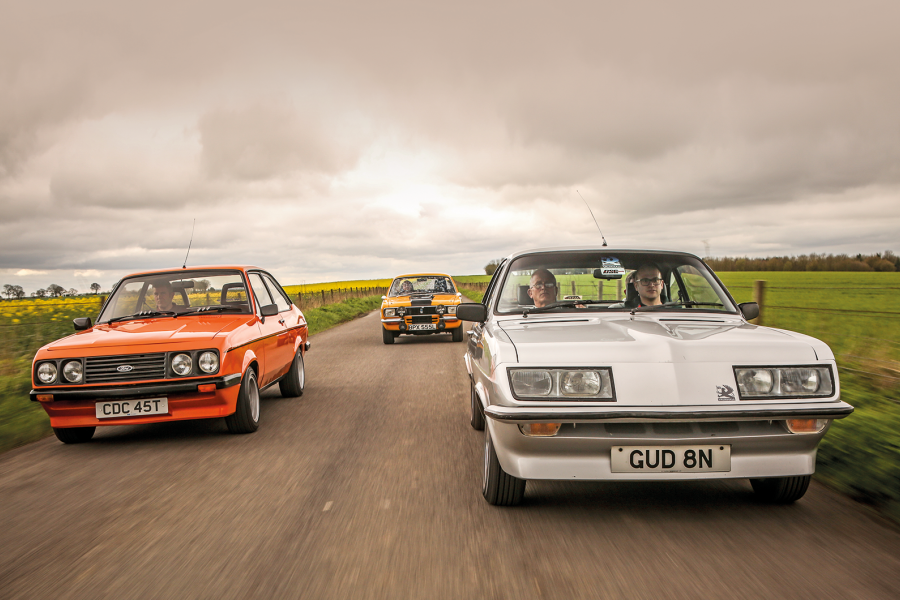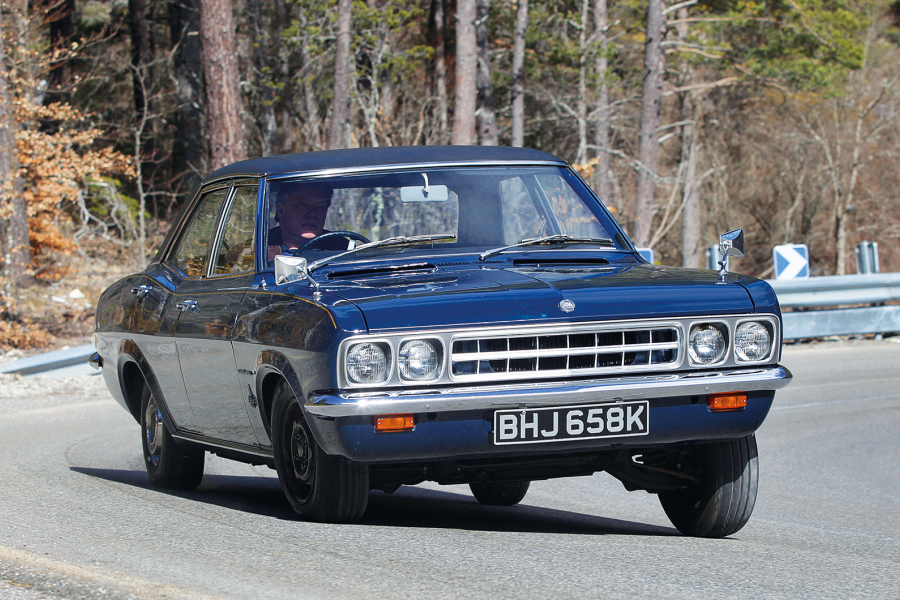Meanwhile, the flagship Cresta was the only real choice for the discerning motorist who craved ‘enhanced prestige’.
The list of fittings included a cigarette lighter, a clock above the rear-view mirror, windscreen washers, two-tone paint, plus upholstery in ultra-fashionable nylon and Elastofab.
The Griffin appears to float within the chrome ring on the Cresta’s bonnet
This was the car for the ambitious property developer, wartime spiv turned ‘legitimate businessman’, or skiffle band leader who’d made the bigtime; the boot was certainly big enough to accommodate any number of guitars.
The PA competed directly with the Austin A105 Westminster and the Zodiac MkII, both of which were strong rivals.
The BMC offering was handsome in its substantial fashion and fully equipped, but it had a more formal air.
The Ford, meanwhile, was as accomplished an interpretation of Americana as the Vauxhall yet was marginally more conservative.
Elegant script for the Victor
The Luton product could never be accused of understatement, and perhaps its impact is best appreciated when you look at Pathé newsreel footage of the late ’50s.
Among the FX3 taxis, Commer vans and battered pre-war Morris Eights, the Velox and Cresta have the appearance of roadgoing spaceships.
Best of all, the Cresta’s looks are reinforced by genuine ability. It has no claims to be a sports saloon in the manner of a Jaguar Mk1 and, unlike the Citroën DS, it neither inspired a Roland Barthes essay nor altered our perception of motoring.
But it could transport five adults in comfort with an effortless sense of flair.
Enjoying this distinctive wagon
Just manoeuvre the column change into third, watch the speedometer needle gently move towards the 70 mark, and you have a sense of a Vauxhall that anticipated the motorway age.
Viewing Hampshire through the windscreen gave me illusions of being Kenneth Cope in Death Trap – but then the Cresta is a car that encourages dreams.
Both the F-series and PA were updated during their careers, the former becoming slightly muted as it entered middle age and the latter gaining a wraparound rear screen, optional front disc brakes and Hydramatic transmission.
The Victor was replaced by the FB in 1961 and the PA by the PB in 1962, the timing of their departures being as immaculate as their introduction.
This early PA Cresta has a three-piece rear window
They made their bow in the year that Harold Macmillan became Prime Minister, that the BBC commenced broadcasts of The Six-Five Special and Paul McCartney joined John Lennon’s band The Quarrymen.
The final befinned PA departed the factory into a world of That Was The Week That Was and Love Me Do.
The Vauxhall F-series Victor and PA Cresta were never Teddy Boy cars per se, but they were emblematic of a brave new world of coffee bars, Lionel Bart tunes and consumer affluence.
To employ a very over-used expression, they really did capture the zeitgeist. And anyone who disagrees is an obvious square, daddio.
Images: Tony Baker
This was originally in our December 2017 magazine; all information was correct at the date of original publication
Factfiles
Vauxhall F-Series Victor
- Sold/number built 1957-’61/390,747 (all types of F-series)
- Construction steel monocoque
- Engine cast-iron, ohv 1508cc ‘four’, single Zenith carburettor
- Max power 55bhp @ 4200rpm
- Max torque 84lb ft @ 2400rpm
- Suspension: front independent, by double wishbones, coil springs, anti-roll bar rear live axle, semi-elliptic leaf springs; telescopic dampers f/r
- Transmission three-speed manual, RWD
- Steering Burman recirculating ball
- Brakes drums all round
- Length 13ft 11½in (4255mm)
- Width 5ft 2½in (1588mm)
- Height 4ft 10in (1473mm)
- Weight 2325lb (1055kg)
- 0-60mph 28 secs
- Top speed 73mph
- Mpg 31
- Price new £931 7s
Vauxhall PA Cresta (where different)
- Sold/number built 1957-’60/81,841 (inc Velox)
- Engine 2262cc ‘six’
- Max power 82bhp @ 4400rpm
- Max torque 124lb ft @ 1800rpm
- Length 14ft 10in (4521mm)
- Width 5ft 8½in (1740mm)
- Height 4ft 9in (1500mm)
- Weight 2646lb (1200kg)
- 0-60mph 16.8 secs
- Top speed 90mph
- Mpg 23
- Price new £1073 17s
READ MORE
Battle for the boardroom: Austin 3 Litre vs Ford Executive vs Vauxhall Viscount
Budget sporting saloons: Triumph Vitesse vs Vauxhall Viva GT
Also in my garage: a fascination for the ’50s
Andrew Roberts
Andrew is a long-time contributor to Classic & Sports Car

